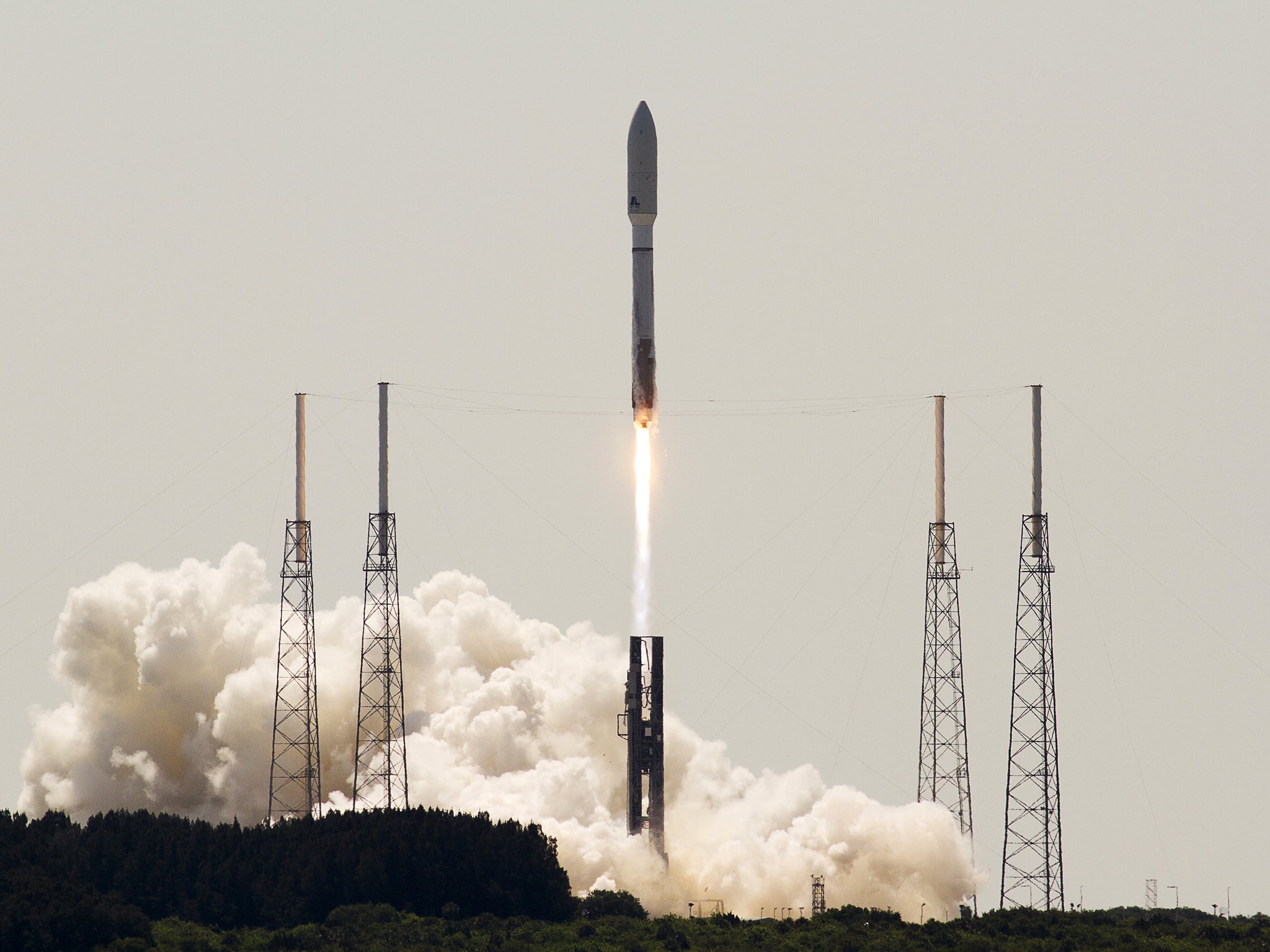Mysterious US military rocket launched into space, as Air Force stays secret on high-tech satellites circling the Earth
The Air Force has revealed some of the experiments that are on board the rocket — but many of the others are shrouded in mystery

Your support helps us to tell the story
This election is still a dead heat, according to most polls. In a fight with such wafer-thin margins, we need reporters on the ground talking to the people Trump and Harris are courting. Your support allows us to keep sending journalists to the story.
The Independent is trusted by 27 million Americans from across the entire political spectrum every month. Unlike many other quality news outlets, we choose not to lock you out of our reporting and analysis with paywalls. But quality journalism must still be paid for.
Help us keep bring these critical stories to light. Your support makes all the difference.
The US has launched an unmanned, mysterious rocket into space, carrying technology that nobody really knows the purpose of.
Theories about the aims of the programme — which has now seen four such rockets launched — include ideas that the ship is used to monitor or break foreign satellites, carrying weapons to be dropped from space or carrying out surveillance on people around the world.
The mysterious X-37B space plane was carried into space on top of an Atlas V rocket in Florida. The Air Force owns two of the planes, which look like a little Space Shuttle and were made by Boeing.
The programme has now launched for different X-37B flights. It began with Nasa in 1999 and was then moved to the military, launching its first flight in 2006.
The programme has tested some technology that has eventually made it into more public space flights. But the military has remained quiet on what much of the experiments are, leading to theories about the secret uses to which the ships might be being put.
This time around, the Air Force has revealed some of the experiments that are on board.
That includes a special Hall thruster, which is based on new plasma-based technology that could make satellites much more efficient than the existing chemical-powered ones. And Nasa is sending a range of different materials to see how they can withstand time in space.
The ship will also be carrying a solar sail, made by a crowdfunded effort led by America popular scientists Bill Nye. That has a huge shiny sail that it hopes can harvest energy from the sun as it flies through space, put into a small box to be carried out of Earth's atmosphere.
It's not clear how long the mission will last, or even which of the Air Force's two X-37Bs have been sent up. The last mission began in December 2012, and the plane was flying for 675 days, setting a record for a reusable space vehicle.
Join our commenting forum
Join thought-provoking conversations, follow other Independent readers and see their replies
Comments